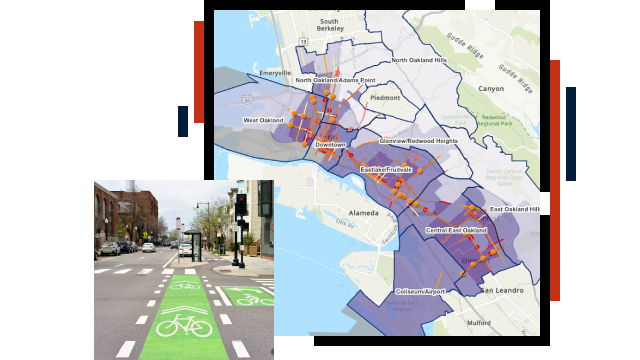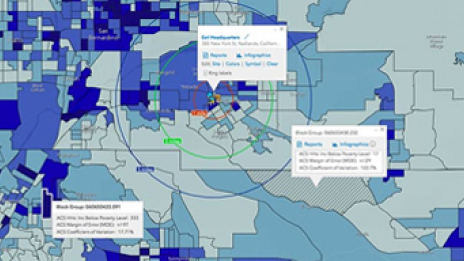Understand your community
Understanding precedes action. Gaining deeper knowledge about your community is necessary to understanding transportation needs and advancing greater accessibility. Identifying where economic and mobility challenges occur is a first step in addressing equity. Esri's rich data sources include demographic and spatial data down to a granular level to help you analyze specific populations in your community and track changes over time. These GIS tools allow you to visualize factors such as where low-income seniors, residents in severely rent-burdened households, and people with disabilities live.







